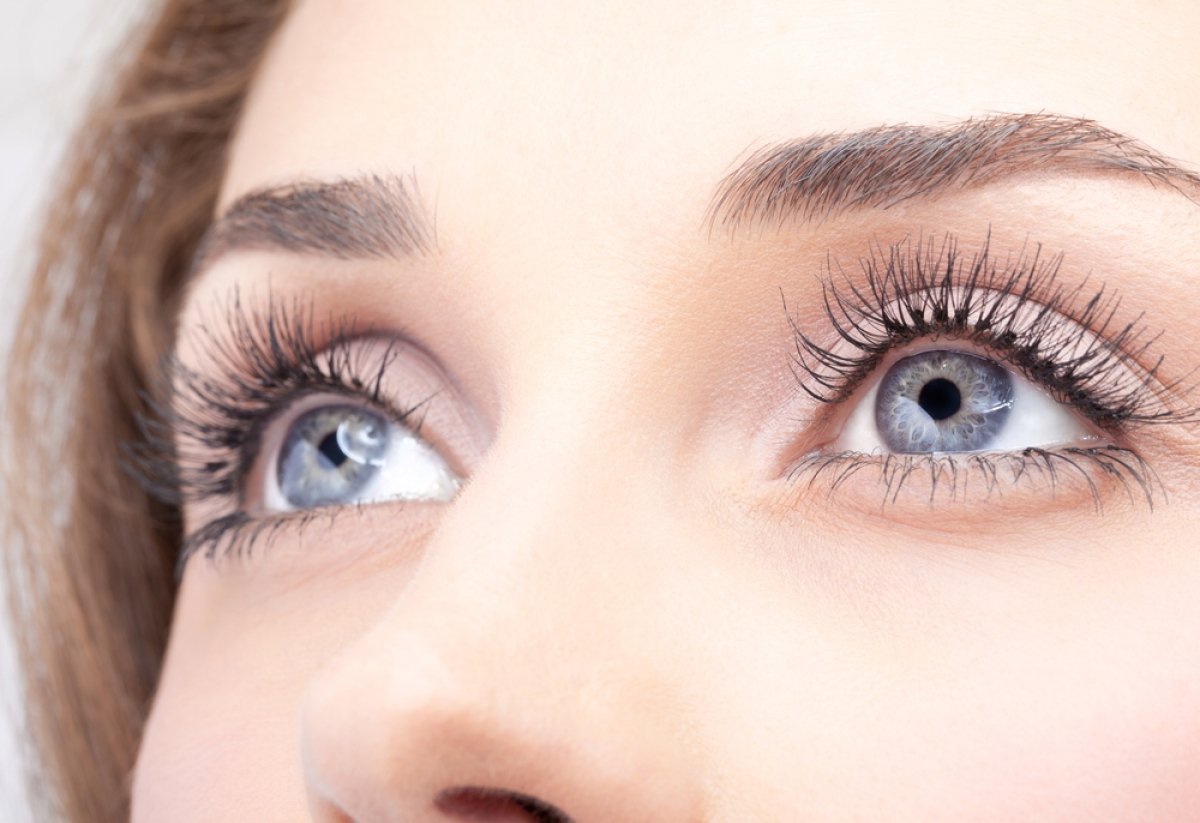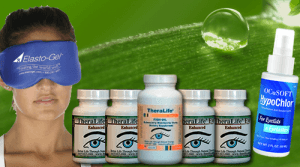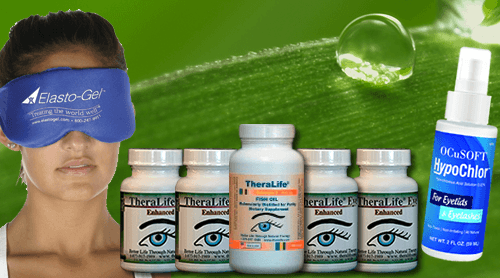To effectively relieve Sjögren’s neuropathy, consider exploring the benefits of TheraLife’s products, which are designed to support individuals dealing with various eye-related conditions. TheraLife offers solutions that focus on natural and holistic approaches to managing symptoms, promoting eye health, and enhancing overall well-being. Their products are tailored to address specific issues such as dry eyes, blepharitis, and other inflammatory conditions, providing relief and improving quality of life for their customers.
TheraLife’s offerings include specialized supplements that aim to restore the body’s natural balance, reduce inflammation, and improve tear production. These products are formulated with natural ingredients, ensuring safety and minimizing side effects. By targeting the underlying causes of eye discomfort, TheraLife helps users achieve sustained relief.
In addition to their core products, TheraLife provides guidance on lifestyle changes and dietary adjustments that can further optimize treatment outcomes. Their comprehensive approach empowers users to take control of their health, offering a path to comfort and improved quality of life.
Powerful All Natural Oral Treatment for Sjogren’s Dry Eyes, Joint Pain.
Key Takeaways
- Intravenous Immunoglobulin (IVIG) significantly reduces neuropathic pain with a 73.4% reduction in mean VAS score.
- Corticosteroids like prednisone provide fast-acting relief for inflammation and pain, especially in extraglandular features.
- Rituximab shows a 65% neurological improvement rate, particularly effective in vasculitis or cryoglobulinaemia cases.
- Cyclophosphamide is reserved for severe cases, effective against glomerulonephritis and systemic necrotizing vasculitis.
- Combining Rituximab with corticosteroids enhances outcomes and reduces neuropathic symptoms.
Intravenous Immunoglobulin Benefits
Intravenous Immunoglobulin (IVIG) has proven to be a highly effective treatment for alleviating neuropathic pain associated with Sjögren’s syndrome. You’ll find that IVIG efficacy is evident, with a 73.4% reduction in pain as assessed by the mean VAS score. Patients with small fiber neuropathy have reported significant pain reduction and paresthesia relief following IVIG treatment. Clinical data indicates improvement in 82% of individuals with peripheral neuropathies linked to Sjögren’s. The treatment significantly benefits sensorimotor and nonataxic sensory neuropathies, enhancing patient outcomes. Importantly, following an autoimmune diet can further support symptom management by reducing gut inflammation, thereby potentially improving the efficacy of treatments like IVIG. While less effective for ataxic neuropathy, IVIG still shows promise in stabilizing symptoms. Dosing regimens, often at 0.4 g/kg/day over five days, yield sustained pain reduction, highlighting the need for continued research into ideal protocols. When the underlying cause of the neuropathy is known, such as in autoimmune-related cases, IVIG tends to have a higher efficacy in symptom management.
Corticosteroid Applications
When considering corticosteroid applications for Sjögren’s neuropathy, you can achieve temporary inflammation control, particularly during severe flares, by initiating a short-term, high-dose regimen. Although the evidence for corticosteroids’ efficacy in improving autonomic neuropathies in Sjögren’s syndrome is limited, they’ve shown promise in certain cases through case reports and series. Patients with Sjögren’s syndrome often experience extraglandular features like arthritis and skin issues, which can complicate diagnosis and treatment. It’s crucial to maintain vigilant monitoring to mitigate potential side effects while optimizing the therapeutic benefits. For patients with severe symptoms, corticosteroids may provide fast-acting relief, though long-term use requires careful management and consideration of steroid-sparing alternatives.
Temporary Inflammation Control
Although managing Sjögren’s neuropathy can be challenging, corticosteroids provide a potent solution for controlling temporary inflammation. These medications, including prednisone and methylprednisolone, are fast-acting, offering significant pain management and symptom relief. By quickly halting severe symptoms, corticosteroids serve as an effective first-line treatment. Typically, short-term use suffices, but some cases may require prolonged administration. It’s essential to taper doses over time to reduce potential side effects. Corticosteroids can be used alone or alongside other treatments like IV IG, enhancing their efficacy. However, while they manage symptoms, they don’t offer a cure for the underlying neuropathy. Regular specialist reviews guarantee treatment plans remain tailored, balancing effectiveness with the need to minimize long-term steroid use side effects. For those experiencing dry eyes as a symptom, the TheraLife® Eye Autoimmune Formula may help restore normal cell functions in tear glands, offering additional relief.
Autonomic Neuropathy Improvement
Managing autonomic neuropathy in Sjögren’s syndrome, corticosteroids have demonstrated notable efficacy, providing rapid symptom relief and improvement. Prednisone or prednisolone are often prescribed, either alone or combined with other immunosuppressive agents. Corticosteroids act swiftly, making them a preferred choice for alleviating symptoms compared to therapies like rituximab. While individual responses to treatment vary, many patients experience significant improvement or stabilization. It’s essential to evaluate potential side effects, hence physicians might combine corticosteroids with lifestyle modifications and dietary adjustments to optimize outcomes and minimize adverse effects. Regular updates from Johns Hopkins Rheumatology enhance awareness of ongoing research and developments in managing Sjögren’s Syndrome, providing invaluable insights for health care professionals. Initiating treatment often involves higher doses tapered over time, ensuring effective management. Thorough studies are needed to further validate these promising outcomes and refine treatment strategies. Since Sjogren’s syndrome and lupus often share overlapping symptoms, distinguishing between the two can be critical for effective management and treatment planning.
Rituximab for Neuropathy
When considering Rituximab for treating Sjögren’s neuropathy, you’ll find that it’s shown a 65% neurological improvement rate at three months, with a notable reduction in the Rankin Scale from 3 to 2 over nine months. In cases of vasculitis or cryoglobulinaemia, Rituximab was effective in 90% of patients at three months, highlighting its targeted efficacy. Combining Rituximab with corticosteroids has proven effective for autonomic neuropathies, leveraging the immunomodulatory effects of both agents. While Rituximab demonstrates significant efficacy, particularly in cryoglobulinaemia or vasculitis-related cases, it’s essential to weigh its benefits against potential side effects like serum sickness-like disorders. TheraLife’s formula also regulates autoimmune responses by modifying improper immune reactions, potentially offering an additional approach to managing Sjögren’s syndrome symptoms.
Rituximab’s Effectiveness in Neuropathy
Rituximab (RTX) has emerged as a promising therapeutic option for neuropathy associated with primary Sjögren’s syndrome (pSS), particularly in cases involving vasculitis or cryoglobulinaemia. When examining rituximab dosage and patient outcomes, studies show that neurological improvement occurred in 65% of patients after three months. Specifically, RTX was effective in 90% of those with vasculitis or cryoglobulinaemia, compared to only 29% without these conditions. The Rankin scale improvement from 3 to 2 further supports these findings. Despite the low evidence level due to heterogeneous follow-up, RTX is particularly beneficial for targeted populations. Rheumatoid arthritis patients often experience extra-articular manifestations, including ocular complications, which highlights the importance of comprehensive care. Diagnosis often requires skin biopsies and specific neurophysiologic tests (Laser Evoked Potentials, Sympathetic Skin Reflexes, Quantitative Sensory Testing). RTX’s efficacy varies, demanding careful patient selection.
Combining Rituximab With Corticosteroids
Building upon the promising results of rituximab for neuropathy in Sjögren’s syndrome, particularly in cases with vasculitis or cryoglobulinaemia, combining rituximab with corticosteroids emerges as a potent strategy to enhance therapeutic outcomes. This approach notably reduces neuropathic symptoms and allows for a decrease in corticosteroid dosage, minimizing long-term side effects. Early initiation—within 10 weeks post-diagnosis—optimizes efficacy, achieving a 90% success rate at three months. In a study on chronic inflammatory demyelinating polyradiculoneuropathy (CIDP), early initiation of rituximab treatment was linked to better outcomes, reinforcing the importance of timely therapeutic intervention. Understanding rituximab dosage and corticosteroid interactions is vital, as these factors influence safety and effectiveness. The combination also improves disease activity, as measured by the European Sjögren’s Syndrome Disease Activity Index, with better functional outcomes on the Rankin scale. Close monitoring is essential to manage potential side effects like infections and blood cell count abnormalities. Individuals with Sjögren’s syndrome often experience extreme fatigue, which can significantly impact their daily lives and overall well-being.
Cyclophosphamide Treatment
Cyclophosphamide is a potent immunosuppressive agent critical for managing severe systemic manifestations of Sjögren’s syndrome, particularly when other treatments fall short. Its efficacy is evident in treating conditions like glomerulonephritis and systemic necrotizing vasculitis. However, the cyclophosphamide risks are significant, including potential lymphoma and acute toxicities such as neutropenia and hemorrhagic cystitis. It is administered via intravenous infusion in a hospital or clinic, ensuring closely monitored dosing. Monthly intravenous pulses can enhance severe extraglandular symptom management, but the treatment should be reserved for life-threatening cases due to its high-risk profile. Patients with Sjögren’s syndrome often experience dry eyes as part of their symptoms, which can be addressed with supportive treatments. Monitoring is essential to minimize adverse effects and guarantee peak therapeutic outcomes.
Immunosuppressive Therapy Options
While cyclophosphamide remains a potent choice for severe cases, exploring broader immunosuppressive therapy options opens up possibilities for managing Sjögren’s syndrome-related neuropathy effectively. Immunosuppressive mechanisms using drugs like azathioprine, methotrexate, and mycophenolate mofetil can tailor treatment personalization to individual patient needs. B-cell depletors such as rituximab and belimumab target overactive B-cells, offering relief while minimizing side effects with the lowest effective doses. Regular monitoring, including blood counts and liver enzyme evaluations, is essential to manage infection risks associated with these therapies. For patients requiring additional symptom relief, medications like Salagen or Evoxac can be used to increase saliva and potentially alleviate dry mouth symptoms. Integrating anti-inflammatory foods into the diet can also assist in reducing autoimmune symptoms and support overall health. Clinical benefits of immunomodulatory therapy vary, necessitating careful selection to achieve ideal outcomes. Personalized approaches consider patient-specific responses, offering a nuanced strategy in alleviating neuropathy symptoms associated with Sjögren’s syndrome.
Research Insights and Limitations
Although the exploration of immunomodulatory therapies shows promise in managing Sjögren’s syndrome-associated neuropathy, current research insights reveal notable limitations. Risk factors and diagnostic challenges persist due to heterogeneous treatment decisions and the absence of clinical trials. Neuropathy often precedes sicca syndrome, complicating early diagnosis. Sensory and motor impairments vary, and thorough assessments are limited by incomplete testing practices. Peripheral nerves are often involved in Sjögren’s syndrome, leading to sensory neuropathy and motor impairment, which further complicates the clinical picture for accurate diagnosis and treatment. The management of Sjögren’s syndrome may also involve addressing keratoconjunctivitis sicca as part of associated symptoms.
| Aspect | Finding | Limitation |
|---|---|---|
| Immunomodulatory Therapy | 97% clinical benefit | Low patient number, no trials |
| Symmetric Motor Impairment | 84% prevalence | Diagnostic challenges |
| Sensory Neuropathy Rates | 1.6% to 31% | Variable rates |
| Disease Progression | 31% therapy change | Lack of standardized guidelines |
| Quality of Life Impact | considerably diminished scores | Referral bias, testing limitations |
Further research is essential for better treatment protocols.
Powerful All Natural Oral Treatment for Sjogren’s Dry Eyes, Joint Pain.
Add To Cart
Frequently Asked Questions
Can Lifestyle Changes Help Manage Sjogren’s Neuropathy Symptoms?
You can manage Sjogren’s neuropathy symptoms effectively through lifestyle changes.
Focus on stress management techniques like meditation or yoga to reduce nerve pain.
Implement good sleep hygiene by maintaining a consistent sleep schedule and creating a restful environment.
Regular exercise and a balanced diet rich in omega-3s can improve overall health.
Stay hydrated and avoid alcohol to lessen symptoms.
Consult healthcare providers for personalized advice and adjustments.
Are There Alternative Therapies for Sjogren’s Neuropathy Besides Medications?
Imagine a world where relief isn’t just a dream. Acupuncture benefits emerge as a beacon, reducing peripheral neuropathy symptoms by targeting specific points.
Herbal remedies like evening primrose oil offer anti-inflammatory effects and nerve pain alleviation.
Scientific evidence supports these alternative therapies, showing they can complement conventional treatments.
How Does Diet Impact Neuropathy in Sjogren’s Syndrome?
You can greatly impact neuropathy in Sjogren’s syndrome by addressing nutrient deficiencies and incorporating anti-inflammatory foods into your diet.
Evidence suggests consuming foods rich in omega-3 fatty acids, such as fatty fish and nuts, reduces inflammation. Ensuring adequate intake of antioxidants, like vitamin E, helps alleviate symptoms.
Avoiding alcohol and caffeine is essential, as these exacerbate neuropathy. Additionally, maintaining hydration and gastrointestinal health supports nerve function and symptom management.
What Role Do Physical Therapies Play in Neuropathy Relief for Sjogren’s?
You’ll find physical therapy plays an essential role in pain management for Sjogren’s neuropathy. Techniques like manual therapy and therapeutic exercises enhance nerve function and improve mobility, reducing pain.
Evidence shows that interventions such as electrical stimulation and heat therapy modulate nerve pain effectively. By incorporating functional training, therapists help you regain independence, while personalized plans guarantee targeted, evidence-based care for neuropathy relief, promoting overall health and liveliness.
Are There Any Experimental Treatments for Sjogren’s Neuropathy Currently Being Studied?
When it comes to innovative therapies, remember that “necessity is the mother of invention.”
You’ll find that clinical trials are exploring experimental treatments for Sjogren’s neuropathy. Dazodalibep and Ianalumab are leading the pack, showing promise in Phase II trials by targeting immune interactions and suppressing B cells.
Although results are preliminary, these therapies could offer hope for effective neuropathy relief.
Stay informed as Phase III trials progress, offering potential breakthroughs.
Powerful All Natural Oral Treatment for Sjogren’s Dry Eyes, Joint Pain.
Add To Cart
Conclusion
Navigating the complex landscape of treatments for Sjogren’s neuropathy can be challenging, but there are options available that may offer relief. Theralife.com provides a range of products designed to support eye health, particularly for those suffering from dry eyes and related conditions like Sjogren’s Syndrome. Their products focus on natural and holistic approaches to improve eye moisture and reduce inflammation, offering a promising alternative or complement to traditional treatments.
Theralife’s offerings are grounded in comprehensive research and customer feedback, emphasizing the importance of a balanced diet and lifestyle in managing symptoms. Their supplements aim to enhance the body’s natural ability to produce tears, addressing the root cause of dryness rather than just the symptoms. This can be particularly beneficial for patients with Sjogren’s, who often experience chronic dry eyes and other related issues.
The company’s dedication to natural remedies also extends to other eye conditions, such as blepharitis, uveitis, and crusty eyes. They provide insights into effective home remedies and lifestyle changes that can alleviate discomfort and improve overall eye health. By focusing on natural healing and preventive care, Theralife products strive to offer a comprehensive solution for those seeking relief from the symptoms of Sjogren’s neuropathy and other eye-related ailments.





